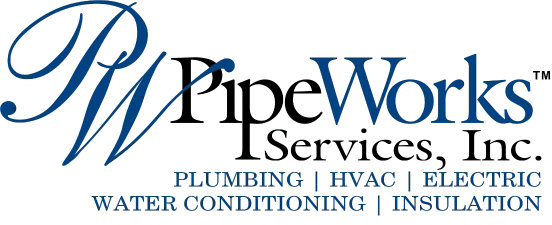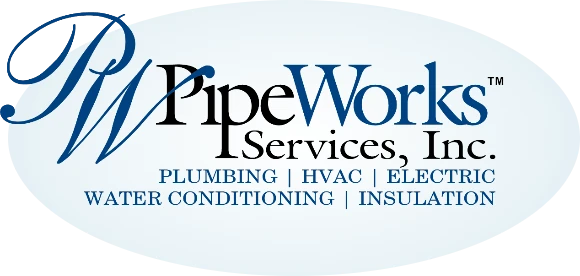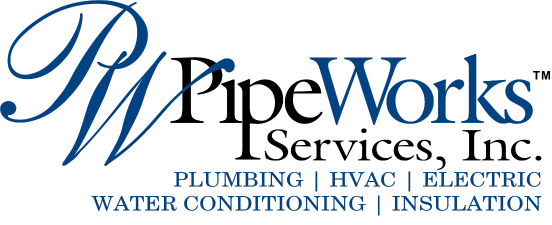Pipe erosion is a common issue in homes that have copper water lines. A protective corrosion layer always develops inside copper pipes and slowly thickens over time. However, there are a variety of issues that can damage this protective layer and lead to pitting inside the pipes. If the insides of the pipes are pitted and not smooth, it leads to increased turbulence in the water flowing through the pipes. In turn, this turbulence causes the inside of the pipe to start eroding and leads to the pipe wall thinning over time.
Pipe erosion is a major issue as it can eventually lead to pinhole leaks forming in the water lines. If left unchecked, even a pinhole leak can cause severe water damage and also lead to mold growth. Erosion can also lead to the elbows and other fittings starting to weaken over time, which can result in a much larger leak. Here, we’ll explain the most common causes of pipe erosion and how they can be prevented or overcome.
High Water Pressure
One of the biggest contributors to pipe erosion is high water velocity, which can happen if the water pressure in the plumbing system is too high. Ideally, the water pressure in your home should be around 45 psi. If the water pressure is around 60 psi or higher, it will lead to your pipes eroding much more quickly.
Water always flows through the pipes in a similar pattern and exerts pressure at specific points in the pipe, leading to the pipe weakening or starting to pit. This especially happens at the elbows where the water suddenly has to change direction, as this change of direction increases the amount of turbulence. While this issue always slowly occurs over time, high water pressure will lead to much greater turbulence and cause the elbows to start pitting. If the pressure is lower and the water flows through the pipes more slowly, there will be far less turbulence even when some pitting is present.
In many places, the pressure in the municipal water system is higher than what a home’s plumbing system can easily withstand. This is especially common in hilly areas, places with taller buildings and anywhere where the water main also supplies fire hydrants. In these situations, the pressure in the municipal water system is intentionally set higher to ensure that all of the buildings in the area receive adequate pressure. However, it often leads to the pressure of the water coming into some buildings being too high. High water pressure is also common for homes in low-lying areas, as gravity naturally increases the pressure and flow rate as the water travels downhill.
In most cases, the solution to overcoming high water pressure and lessening pipe erosion is to install a water pressure regulator. Also known as a pressure-reducing valve, the regulator automatically adjusts to any changes in the pressure of the water coming into the building so that it never rises too high. Water pressure regulators are installed on the main water line where it enters the building and then set to a specific psi. The regulator will usually be partially closed, which narrows the flow of water coming into the building and lowers its pressure. However, if the pressure coming into the building ever decreases, the valve will widen so that the pressure always remains constant.
Poor Workmanship and Improper Installation
Poor workmanship and improper installation can also greatly contribute to pipe erosion. For instance, if the plumber didn’t remove any burrs when installing the pipe, they will interfere with the water flow and increase the amount of turbulence. This can also happen if any solder got inside the pipe when the plumber connected the elbows and other fittings.
Another common issue is when the plumbing system isn’t properly designed and has too many long, straight sections. If you have any longer sections of pipe without bends or elbows, it will lead to the velocity or speed of the water increasing as it flows through these sections. The higher velocity then causes greater turbulence once the water hits an elbow and changes direction. This can also lead to much higher water pressure at the fixture that the pipe supplies.
Unfortunately, there really isn’t much you can do if your pipes were poorly installed or your plumbing wasn’t properly designed. The only real option is to repipe some or all of your house or at least make changes to some of the water lines. If you decide to repipe your home, it’s almost always better to install PEX piping instead of copper. The reason is that PEX piping is sturdier and much more resistant to erosion and corrosion. While high water pressure can still slowly cause PEX pipes to erode, the effect is much less than it is for copper pipes.
High Temperature
Water pressure always continually increases the higher the water temperature is. This is why hot water lines will always experience more erosion and eventually be more prone to developing leaks. The pressure in your hot water lines will always be higher than in the cold lines. Nonetheless, you can still lessen the pressure by turning the temperature on your water heater down. If your hot water is 140 degrees Fahrenheit or higher, the pressure will be much greater, and your pipes will erode more quickly. This is why most experts recommend keeping your water heater set to only 120 degrees. However, you don’t want to go any lower than 120 degrees. The reason is to ensure that the water stays hot enough so that bacteria and viruses like Legionella can’t survive.
Sediment
Water often picks up some silt, sand and sediment as it travels through the municipal water system. This is especially the case if the municipal water system is fairly old or not in great condition. If your main water line is old and corroded, it can also give off lots of particles and sediment. Sediment in the water will increase the amount of turbulence. Silt and sand are also abrasive and will slowly damage the pipes, leading to increased pitting and causing the pipe walls to thin.
The solution to overcoming issues with sediment is to install a whole-home water filtration system. Most of these systems have a sediment filter that will catch any silt, sand and debris in the water flowing into your home. A water filtration system will also remove almost all other impurities and contaminants. This includes bacteria, viruses, chlorine, lead and other heavy metals. Installing a water filtration system will ensure that your water is safe to drink, make it taste better and help to protect your pipes, plumbing fixtures and appliances.
Trust the Professionals
Pipe Works Services is ready to help if you have any issues with leaky pipes or any other plumbing problems. We specialize in main water line replacement, water treatment and all other plumbing repair and installation services. We’re also the top choice if you need any heating, air conditioning, electrical or insulation services in Chatham or the surrounding areas. If you need a plumbing inspection or any other home service, give us a call today.




